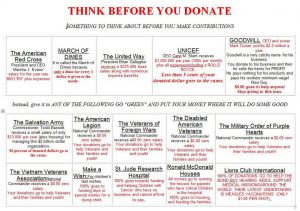
Thank you to those of you who supported the Kickstarter project I’m involved with, where I’m helping to write a book. Thanks to you, the project got fully funded within a few days! Sweet! (You can still donate if you missed out, because there are cool prizes).
Meanwhile, if you’re looking for awesome holiday gifts for the nonprofit people in your life, NWB merchandise is available.
***
I know that many of us have sent out our year-end appeal letter, or are in the process of doing so. Some of us are pouring our blood, sweat, and tears into these letters, sometimes literally, with the paper cuts and the occasional weeping over the hundreds or thousands of letters that need to be stuffed.
You know what makes me weep, though? Y’all who still use language in your letters like “94 cents of every dollar goes directly to programs!!!” Every time I see it or hear about it, it is like getting a barbed-wire-wrapped baseball bat directly to the noggin. Continue reading “Bragging about program-to-admin ratios is a destructive practice that needs to die “




